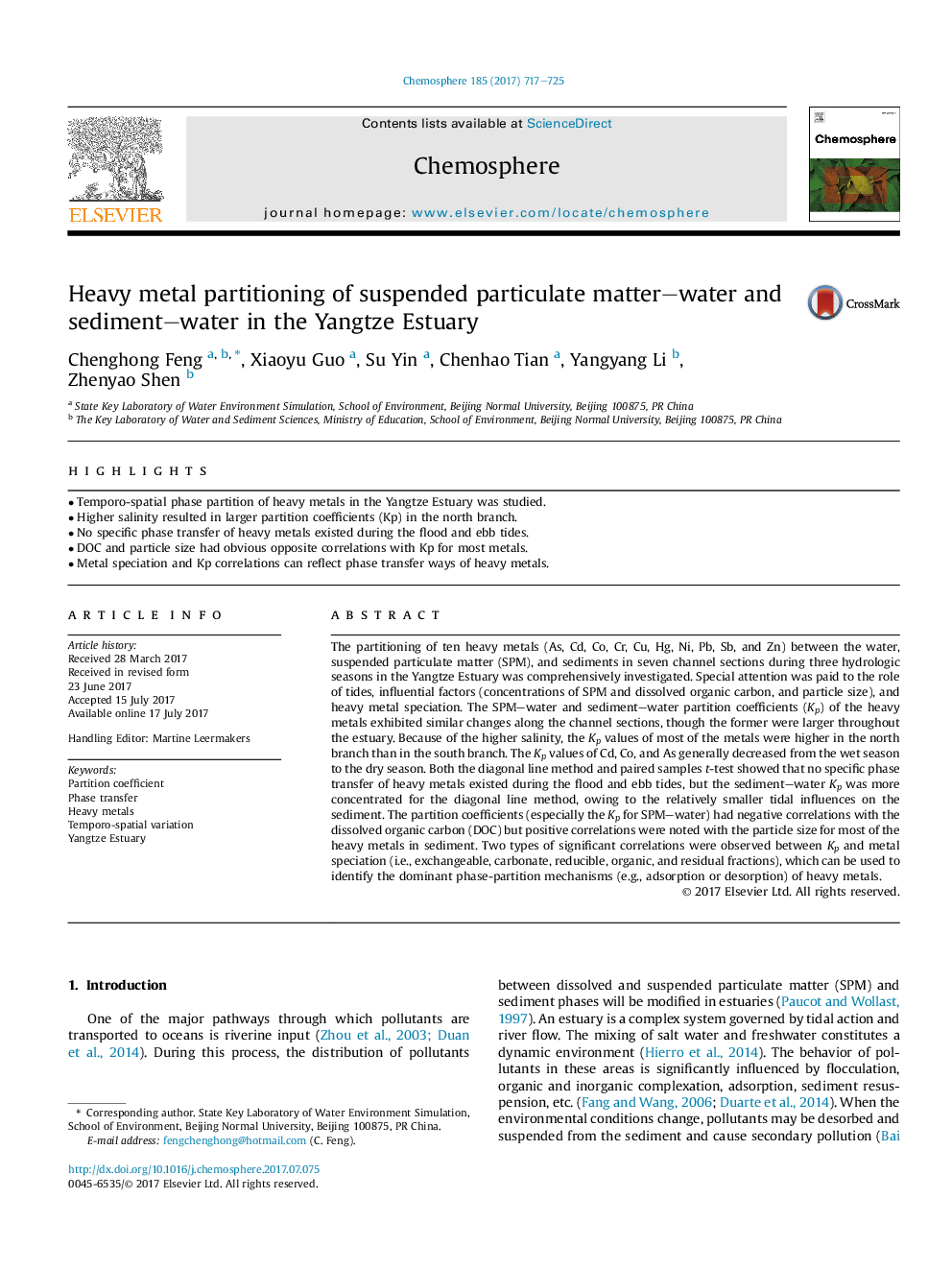| Article ID | Journal | Published Year | Pages | File Type |
|---|---|---|---|---|
| 5746707 | Chemosphere | 2017 | 9 Pages |
â¢Temporo-spatial phase partition of heavy metals in the Yangtze Estuary was studied.â¢Higher salinity resulted in larger partition coefficients (Kp) in the north branch.â¢No specific phase transfer of heavy metals existed during the flood and ebb tides.â¢DOC and particle size had obvious opposite correlations with Kp for most metals.â¢Metal speciation and Kp correlations can reflect phase transfer ways of heavy metals.
The partitioning of ten heavy metals (As, Cd, Co, Cr, Cu, Hg, Ni, Pb, Sb, and Zn) between the water, suspended particulate matter (SPM), and sediments in seven channel sections during three hydrologic seasons in the Yangtze Estuary was comprehensively investigated. Special attention was paid to the role of tides, influential factors (concentrations of SPM and dissolved organic carbon, and particle size), and heavy metal speciation. The SPM-water and sediment-water partition coefficients (Kp) of the heavy metals exhibited similar changes along the channel sections, though the former were larger throughout the estuary. Because of the higher salinity, the Kp values of most of the metals were higher in the north branch than in the south branch. The Kp values of Cd, Co, and As generally decreased from the wet season to the dry season. Both the diagonal line method and paired samples t-test showed that no specific phase transfer of heavy metals existed during the flood and ebb tides, but the sediment-water Kp was more concentrated for the diagonal line method, owing to the relatively smaller tidal influences on the sediment. The partition coefficients (especially the Kp for SPM-water) had negative correlations with the dissolved organic carbon (DOC) but positive correlations were noted with the particle size for most of the heavy metals in sediment. Two types of significant correlations were observed between Kp and metal speciation (i.e., exchangeable, carbonate, reducible, organic, and residual fractions), which can be used to identify the dominant phase-partition mechanisms (e.g., adsorption or desorption) of heavy metals.
